Have you ever stared at your kitchen counter, wondering what to cook that feels special but doesn’t demand hours of effort? If so, you’re in the right place! Lamb chops might sound fancy, but they’re surprisingly simple to prepare and deliver big on flavor. Whether you’re looking to impress dinner guests or just treat yourself to a restaurant-quality meal at home, mastering lamb chops can be a game-changer. Let’s explore how you can easily create a dish that feels gourmet while fitting perfectly into your busy lifestyle.
List Of Contents
How to Make Lamb Chops More Tender
When it comes to cooking lamb chops, achieving tenderness is the ultimate goal. A perfectly tender lamb chop is not only easier to enjoy but also bursts with flavor, creating a memorable dining experience. Whether you’re a seasoned chef or a beginner in the kitchen, mastering the art of tender lamb chops requires understanding, preparation, and the right techniques. Check out more recipes here.
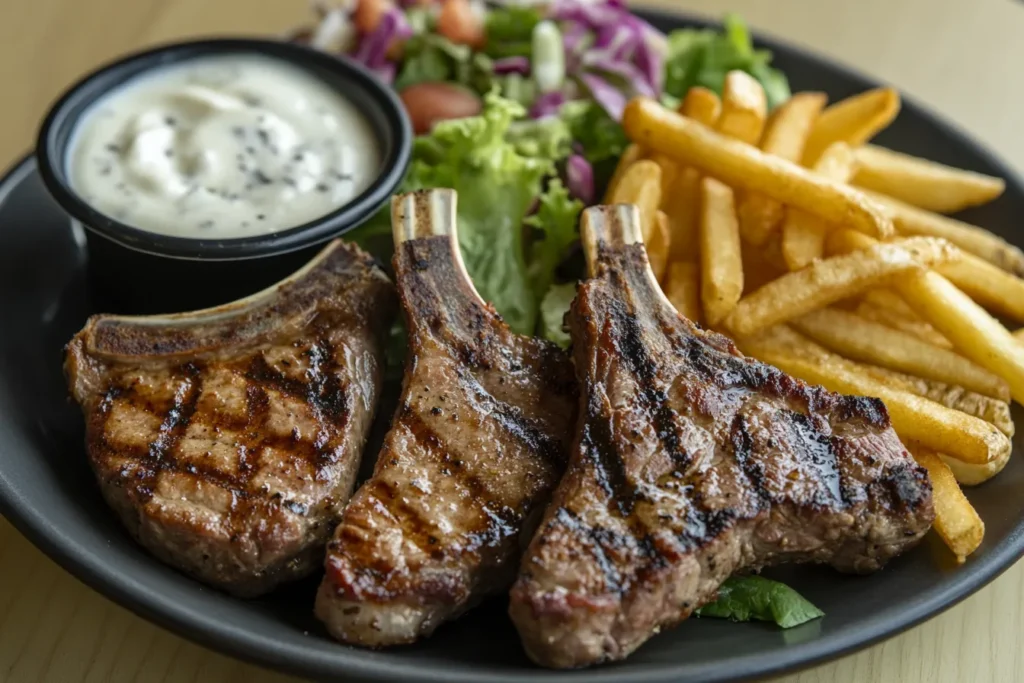
What Are Lamb Chops?
Lamb chops are small cuts of lamb meat, typically taken from the rib, loin, or shoulder of the animal. These chops are known for their rich flavor and succulent texture, making them a favorite in many cuisines around the world. Each type of lamb chop has its unique characteristics, and choosing the right one depends on the dish you want to create. Check out more recipes here.
Types of Lamb Chops:
- Rib Chops: Known for their tender texture and rich marbling, perfect for grilling.
- Loin Chops: Slightly meatier with a “T-bone” structure, excellent for pan-searing.
- Shoulder Chops: Cheaper cuts with bold flavor, best suited for slow cooking.
Understanding the type of lamb chop you’re working with is essential because each requires specific techniques to maximize tenderness.
Factors Affecting Tenderness in Lamb Chops
Tenderness is influenced by several factors:
- The age of the lamb: Younger lambs produce more tender meat.
- The cut: Rib and loin chops are inherently tender, while shoulder chops may require additional effort.
- Proper cooking and preparation techniques play a significant role in achieving the desired texture.
The Importance of Tenderness in Lamb Chops
Why Tenderness Matters in Cooking
Tenderness is more than just a texture; it’s a sensory experience. When lamb chops are tender:
- They’re easier to chew, enhancing the dining experience.
- Flavors infuse more effectively during cooking.
- The final presentation is visually appealing, making them a favorite for special occasions.
Imagine a tough, chewy lamb chop versus one that melts in your mouth. Tenderness transforms an ordinary meal into an extraordinary one.
How Tenderness Enhances Flavor and Presentation
Tender lamb chops absorb marinades, spices, and seasoning better. Additionally, a properly tenderized chop maintains its juices, delivering a flavorful bite every time. This is especially important for dishes where the juiciness of the meat is the star, like Mediterranean-style grilled lamb chops. Check out more recipes here.
Choosing the Right Lamb Chops
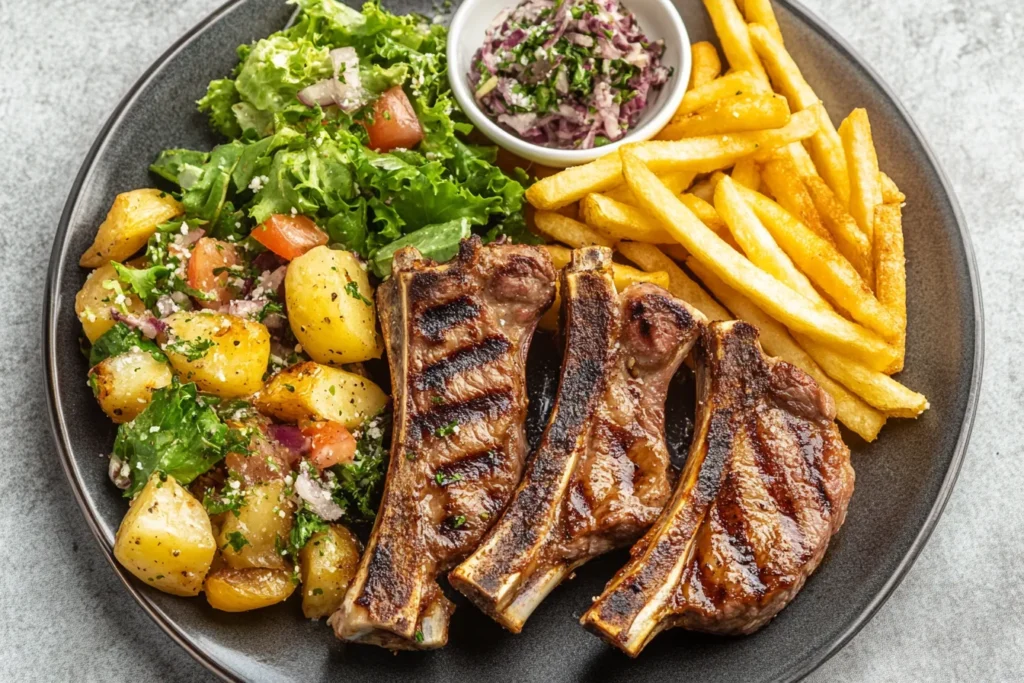
Tips for Selecting Fresh Lamb Chops
- Look for bright red meat with a fine grain.
- Avoid chops with excessive sinew or gristle.
- Opt for chops that have white, creamy fat instead of yellow, which can indicate age.
Freshness is key. Purchase lamb from a reputable butcher or market, ensuring it is stored at the correct temperature.
Identifying High-Quality Cuts
High-quality cuts come from the back of the lamb, where muscles are less worked. Rib and loin chops are excellent choices for quick cooking methods like grilling or pan-searing. Shoulder chops, while tougher, can become tender with the right preparation. Check out more recipes here.
Pre-Cooking Preparation Techniques
Trimming Excess Fat for Even Cooking
Trimming the fat cap on lamb chops ensures even cooking and prevents flare-ups when grilling. While fat adds flavor, too much can overpower the meat and result in uneven heat distribution. Check out more recipes here.
Importance of Bringing Lamb Chops to Room Temperature
Allowing lamb chops to rest at room temperature before cooking promotes even cooking. This step prevents the exterior from overcooking while the interior remains raw.
Marinades and Their Role in Tenderizing
Acid-Based Marinades: Lemon, Yogurt, Vinegar
Acids break down protein fibers in meat, making them softer:
- Lemon juice adds a tangy flavor and brightens the meat.
- Yogurt is a traditional tenderizer in Middle Eastern cuisine.
- Vinegar works well in creating robust marinades for tougher cuts.
Oil-Based Marinades for Flavor Infusion
Oil-based marinades coat the meat, locking in moisture and infusing it with herbs and spices. A blend of olive oil, garlic, rosemary, and thyme is a classic pairing for lamb chops.
Suggested Herbs and Spices for Lamb Chops
To enhance flavor, consider these options:
- Herbs: Rosemary, mint, oregano.
- Spices: Cumin, paprika, coriander.
Salt as a Natural Tenderizer
Benefits of Salt Brining
Salt not only enhances flavor but also tenderizes meat by breaking down muscle proteins. A simple salt brine can transform tough lamb chops into tender, juicy delights.
Step-by-Step Guide to Salt-Treating Lamb Chops
- Sprinkle kosher salt generously on both sides of the chops.
- Let them rest for at least 30 minutes (or overnight in the refrigerator for more intense tenderizing).
- Wash off the extra salt and thoroughly dry the surface before cooking.
Using Dairy for Tenderizing
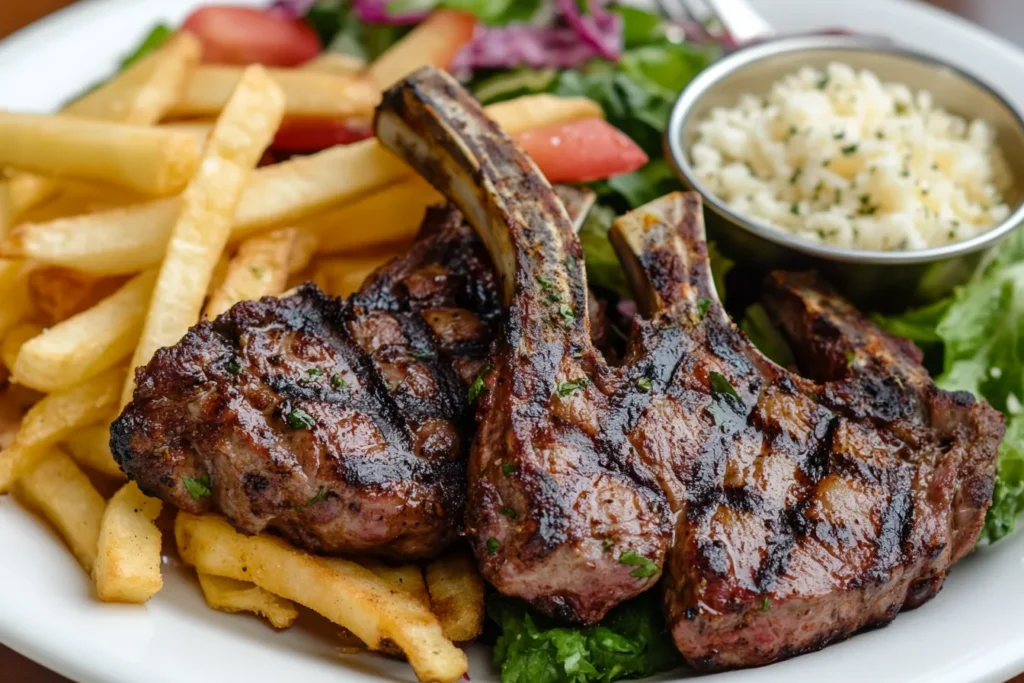
Why Yogurt and Buttermilk Work
Dairy products like yogurt and buttermilk contain lactic acid, which gently breaks down meat proteins. These natural tenderizers are gentler compared to vinegar or lemon juice.
Application Techniques for Maximum Effectiveness
Coat the lamb chops in yogurt or buttermilk and let them marinate for several hours. For added flavor, mix in spices like cumin and garlic. Always rinse the chops before cooking to avoid burning the dairy.
Slow Cooking for Tender Lamb Chops
Overview of Slow Cooking Methods
Slow cooking is ideal for tougher cuts like shoulder chops. Using a slow cooker or braising in the oven allows the connective tissues to break down, resulting in fork-tender meat.
Benefits of Low and Slow Heat
Slow cooking at low temperatures helps the meat stay moist while allowing it to develop rich and robust flavors. Pair slow-cooked lamb chops with hearty vegetables for a complete meal.
Resting Lamb Chops Before and After Cooking
Why Resting Before Cooking Matters
Letting lamb chops rest before cooking helps the meat relax, ensuring even heat distribution and reducing the risk of toughness from sudden temperature shifts. Similarly, resting lamb chops for 5–10 minutes after cooking allows the juices to settle and redistribute, resulting in tender, juicy bites every time.
Allowing Lamb to Rest After Cooking for Retained Juices
After cooking, resting lamb chops for 5–10 minutes enables the juices to redistribute, ensuring every bite is succulent.
Essential Kitchen Tools for Tenderizing
Meat Mallet and Tenderizing Tools
A meat mallet breaks down muscle fibers, especially in tougher cuts like shoulder chops. It’s a quick way to ensure tenderness without compromising the meat’s structure.
Importance of a Meat Thermometer
Using a meat thermometer guarantees perfectly cooked lamb. Aim for the following internal temperatures:
- Medium-rare: 135°F (57°C)
- Medium: 145°F (63°C)
Cooking Techniques to Achieve Tenderness
Proper cooking techniques can make or break the tenderness of lamb chops. Mastering a few methods ensures your lamb is juicy and flavorful every time.
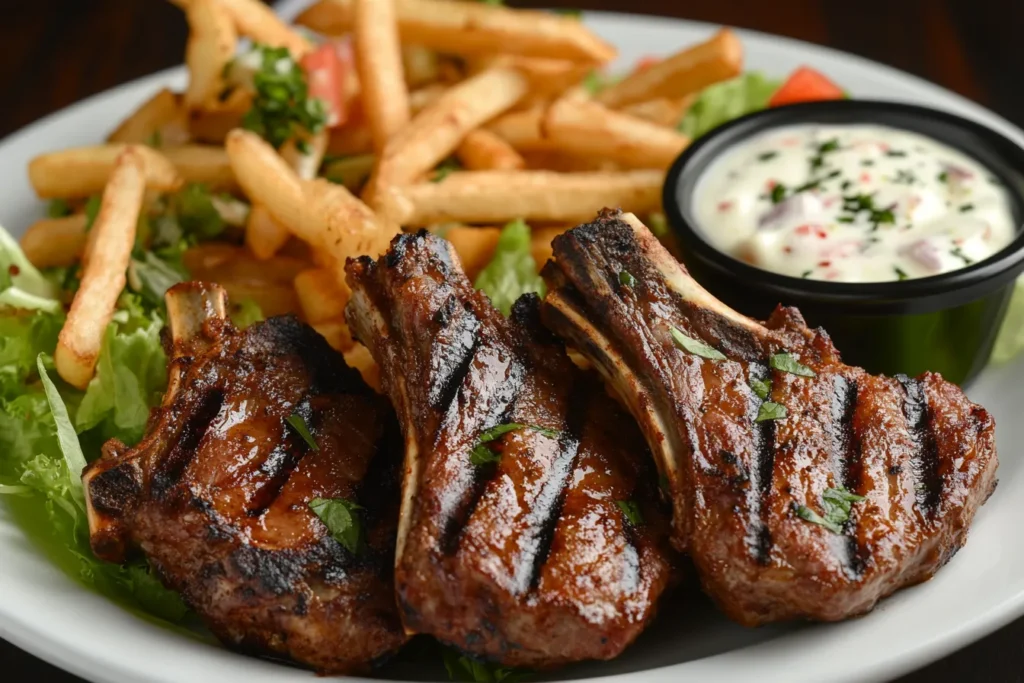
Grilling Lamb Chops Properly
Grilling lamb chops can give them a beautiful char and smoky flavor. To achieve tender results:
- Preheat the grill: Ensure it’s hot before placing the chops.
- Oil the grates: Prevent sticking and maintain a clean sear.
- Cook quickly over direct heat: Rib and loin chops typically take 3–4 minutes per side for medium-rare.
Avoid overcooking as high heat can quickly dry out the meat. Using a marinade with oil helps lock in moisture during grilling.
Pan-Searing Tips for Juicy and Tender Meat
Pan-searing is ideal for achieving a golden crust while keeping the interior tender. Here’s how:
- Heat a cast-iron skillet until very hot.
- Add a high-smoke-point oil like grapeseed or avocado oil.
- Sear the lamb chops for 2–3 minutes per side, then finish in the oven if needed.
Adding butter, garlic, and herbs like rosemary toward the end creates a rich, aromatic flavor.
Oven-Baking for Consistent Results
For those who prefer hands-off cooking, oven-baking is a reliable method:
- Preheat the oven to 375°F (190°C).
- Season and sear the lamb chops briefly in a pan to develop flavor.
- Transfer the pan to the oven and cook for 6–8 minutes, depending on thickness.
This method ensures even cooking, making it perfect for thicker cuts like loin chops.
Ideal Temperature for Cooking Lamb Chops
For the best flavor and tenderness, lamb chops are ideally cooked to medium-rare or medium:
- Medium-rare: 130–135°F (54–57°C)
- Medium: 135–145°F (57–63°C)
Use a meat thermometer to avoid guessing and ensure precision.
Avoiding Overcooking to Prevent Toughness
Overcooking lamb chops can result in dry, chewy meat. Take the lamb chops off the heat slightly before they reach your desired temperature, as they will continue to cook while resting.
Why Sous Vide Works Well for Lamb
Sous vide is a method that involves sealing the meat in a vacuum bag and cooking it in a precisely controlled water bath. This method ensures even cooking without overcooking. It’s especially useful for lean cuts like rib chops.
Step-by-Step Guide to Sous Vide Lamb Chops
- Sprinkle the lamb chops with salt, pepper, and your choice of herbs for seasoning.
- Vacuum-seal them in a bag.
- Cook in a water bath at 131°F (55°C) for 1–2 hours.
- Sear the lamb chops in a hot pan to create a golden, flavorful crust.
Infusing Moisture Through Braising
Braising involves cooking lamb chops in a flavorful liquid at low heat for an extended period. This method is perfect for shoulder chops, which benefit from slow cooking to break down collagen.
Steps for braising:
- Sear the chops in a pan to develop a crust.
- Add liquid (such as chicken stock, red wine, or beef broth) and aromatics like garlic and onions.
- Cover and cook on low heat for 1–2 hours.
Benefits of Cooking Lamb in Flavorful Liquids
Cooking in liquid prevents the lamb from drying out and infuses it with bold flavors. A red wine reduction or herb-infused broth pairs exceptionally well with lamb’s natural richness.
Techniques to Salvage Overcooked Meat
- Cut the meat thinly against the grain to minimize toughness, then simmer the slices in a rich sauce or broth to add moisture and flavor.
- Pair with creamy sides like mashed potatoes to balance the texture.
Using Sauces and Gravies for Rehydration
Rich sauces, such as a red wine glaze or mushroom gravy, can mask dryness and add moisture. Coat the lamb generously before serving for a more palatable experience.
Complementary Spices for Tender Lamb
Some spices that work well include:
- Coriander: Adds a warm, nutty flavor.
- Cumin: Enhances the lamb’s earthiness.
- Smoked Paprika: Provides a subtle smoky depth.
Cooking with Garlic, Rosemary, and Thyme
These aromatics are classic for lamb. Incorporate them while cooking or include them in marinades for added flavor. Their oils penetrate the meat, tenderizing it naturally.
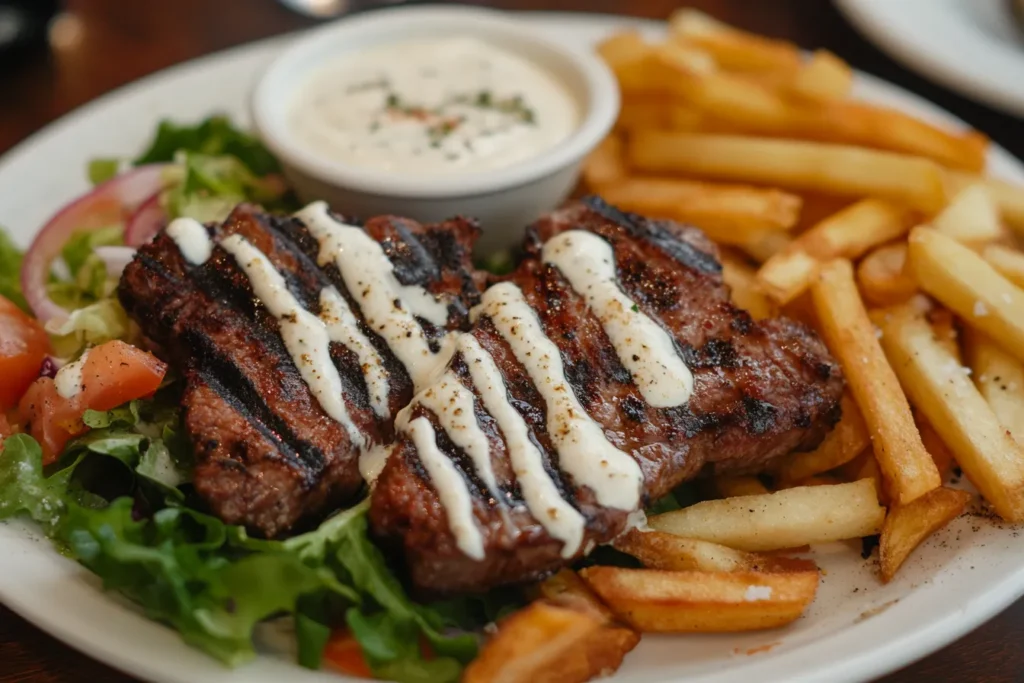
Using Wine, Beer, or Whiskey for Tenderizing
- Red wine: Adds depth and acidity.
- Beer: Especially dark ales, helps break down proteins.
- Whiskey: Infuses a subtle sweetness and caramel flavor.
Alcohol’s Role in Flavor and Tenderness Enhancement
The alcohol helps dissolve fats, allowing flavors to meld. Always let the alcohol cook off to prevent an overpowering taste.
Mediterranean Lamb Chop Recipes
Mediterranean dishes often use yogurt marinades, olive oil, and spices like sumac and oregano. Consider grilling the chops and pairing them with a refreshing mint and garlic yogurt sauce.
Asian-Style Lamb Chop Preparation
Asian recipes feature soy sauce, ginger, and sesame oil for marinating. These ingredients enhance the umami flavor and aid in tenderizing the meat.
Comparing Tender Lamb to Other Protein Sources
Lamb provides a distinct balance of leanness and richness, setting it apart from beef or pork when prepared correctly.
Over-Marinating Lamb Chops
Marinades can tenderize lamb, but marinating it in acidic mixtures for too long may lead to a mushy texture.
Popular Recipes for Tender Lamb Chops
Recipes are the best way to apply what you’ve learned about tenderizing lamb chops. Below are two popular recipes that balance tenderness with exceptional flavor.
Grilled Herb-Crusted Lamb Chops
Ingredients:
- Lamb chops (rib or loin cuts)
- Fresh rosemary, thyme, and parsley
- Garlic (minced)
- Olive oil
- Salt and pepper
Steps:
- Mix chopped herbs, garlic, olive oil, salt, and pepper to create a marinade.
- Coat the lamb chops and let them sit for 30 minutes at room temperature.
- Preheat the grill to medium-high heat.
- Grill each side for 3–4 minutes for medium-rare, adjusting for thickness.
- Rest the chops for 5 minutes before serving.
Garlic Butter Lamb Chops Recipe
A simple yet luxurious preparation.
Ingredients:
- Lamb chops
- Butter
- Garlic cloves (smashed)
- Fresh parsley
- Salt and pepper
Steps:
- Season lamb chops with salt and pepper.
- Heat butter in a skillet until foaming.
- Add garlic and sear the lamb chops for 2–3 minutes per side.
- Baste the lamb chops with melted butter while they cook.
- Garnish with parsley and serve immediately.
Ideal Side Dishes for Tender Lamb Chops
Consider these popular pairings:
- Roasted Vegetables: Carrots, asparagus, and potatoes complement the rich flavor of lamb.
- Creamy Mashed Potatoes: Their smooth texture balances the slight chew of lamb.
- Grain Salads: Couscous or quinoa salads with fresh herbs and lemon provide a refreshing contrast.
Wine Pairings for Enhanced Flavor
Lamb’s rich flavor pairs well with bold wines:
- Red wine: Cabernet Sauvignon or Syrah.
- White wine: A full-bodied Chardonnay for lighter preparations.
Chef-Recommended Techniques for Tenderizing
- Use a reverse-sear method: Cook lamb chops at a low temperature first, then sear at the end.
- Incorporate aromatics like star anise or cinnamon for unique flavor profiles.
- Always rest meat at least 10 minutes post-cooking for the juiciest results.
Secrets to Restaurant-Style Lamb Chops
Chefs often use compound butters (butter mixed with herbs or spices) to finish lamb chops. The butter melts over the hot meat, adding both moisture and flavor.
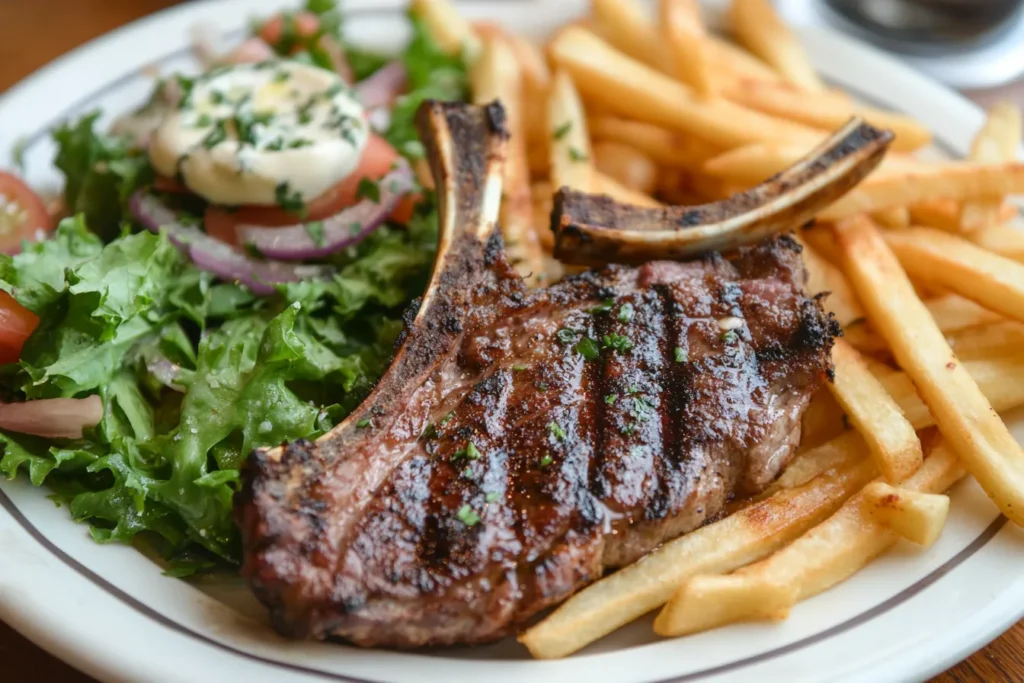
Tenderizing Lamb for Low-Sodium Diets
For low-sodium requirements:
- Use citrus-based marinades instead of salt.
- Herbs like basil, cilantro, and dill can substitute for seasoning.
Gluten-Free Lamb Chop Recipes
Lamb chops are naturally gluten-free, but always check marinades and sauces for hidden gluten. Serve with gluten-free sides like roasted vegetables or rice pilaf.
Using Air Fryers for Lamb Chops
Air fryers create a crispy crust without drying out the meat. Simply marinate the chops, then air fry at 375°F (190°C) for 10–12 minutes, flipping halfway through.
Tenderizing Innovations in Modern Appliances
Tools like meat injectors allow you to infuse marinades directly into the meat, ensuring every bite is tender and flavorful.
How Proteins Break Down for Tenderness
Tenderness is achieved when connective tissues break down. Heat, acids, or enzymes (like those found in papaya or pineapple) assist in this process.
Role of Enzymes in Meat Softening
Enzymes work by breaking down muscle fibers. Natural tenderizers like papain (from papaya) and bromelain (from pineapple) are highly effective but must be used sparingly to avoid mushy meat.
Differences in Tenderizing Beef, Pork, and Lamb
- Beef: Typically more forgiving and benefits from longer cooking times.
- Pork: Requires careful marination to avoid dryness.
- Lamb: A balance of heat, moisture, and seasoning is essential for its delicate texture.
Unique Challenges with Lamb Chops
Lamb’s higher fat content can cause flare-ups on the grill, so careful monitoring is key. Additionally, its distinct flavor requires the right seasoning to shine.
Choosing Ethical and Sustainable Lamb
Opt for:
- Grass-fed lamb, which tends to be leaner and more flavorful.
- Locally sourced meat to reduce the carbon footprint.
Impact of Grass-Fed Lamb on Tenderness
Grass-fed lamb often has a firmer texture but develops deeper flavor. Proper marination and cooking techniques are essential for tenderizing these cuts.
Layering Flavors While Tenderizing
Combine multiple methods, like using an acid-based marinade followed by herb-infused oil during cooking. This layering ensures complex flavors and enhanced tenderness.
For example:
- Marinate lamb chops in yogurt for a few hours.
- Slow-cook them with broth and aromatics.
- Finish with a quick sear for texture.
This method combines the best of marinating, slow cooking, and searing.
FAQs
- How Long Should I Marinate Lamb Chops?
- Ideally, 2–4 hours. Avoid marinating for more than 24 hours as it can affect texture.
- Can Lamb Chops Be Tender Without Marinade?
- Yes, through slow cooking or sous vide methods.
- What’s the Best Temperature for Lamb Chops?
- Medium-rare: 130–135°F (54–57°C).
- How Do I Avoid Overcooking Lamb Chops?
- Use a meat thermometer and remove from heat a few degrees below the target temperature.
- What Are the Best Herbs for Lamb Chops?
- Rosemary, thyme, mint, and oregano.
- Can I Use Frozen Lamb Chops?
- Yes, but thaw completely before cooking for even results.
- Is Salt Necessary for Tenderizing?
- Not strictly, but it enhances flavor and helps break down proteins.
- Can I Reheat Lamb Chops Without Drying Them Out?
- Use a low oven temperature and cover them with foil to retain moisture.
- What Oils Are Best for Cooking Lamb Chops?
- Olive oil, avocado oil, or grapeseed oil.
- Are Lamb Chops Healthy?
- Yes, they are rich in protein, iron, and B vitamins, making them a nutritious choice.
